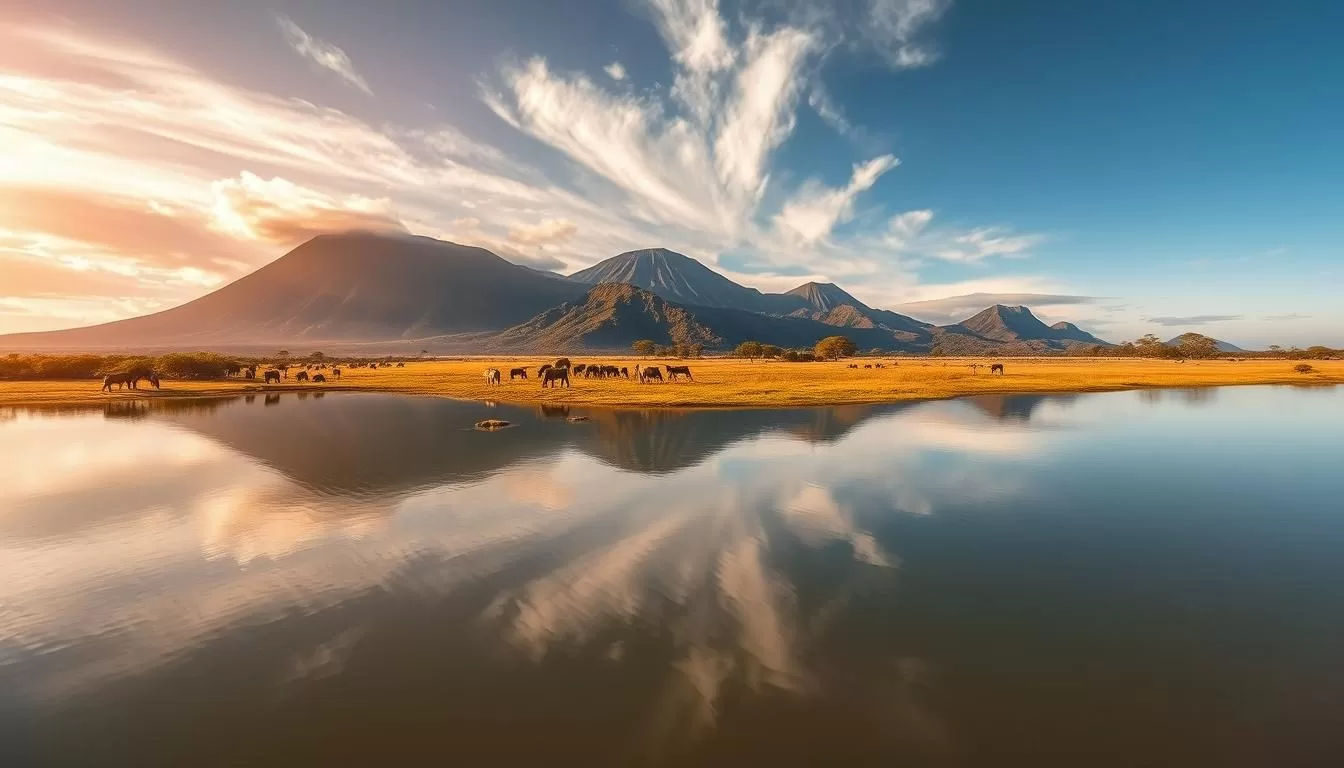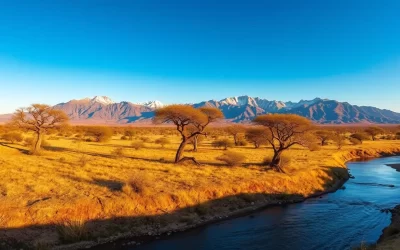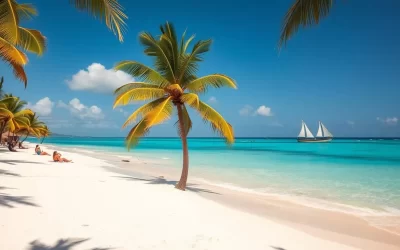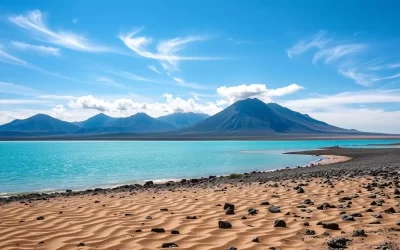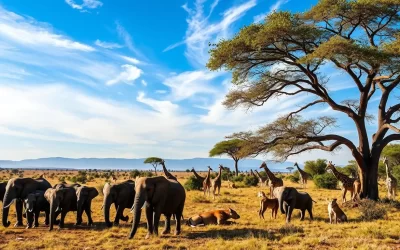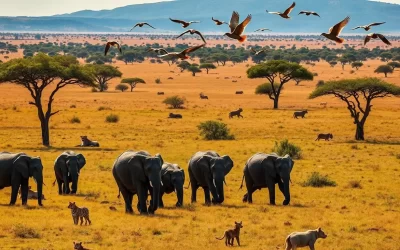✓ Accommodations✓ Flights✓ Rental Cars
Located in the vast expanse of Lake Turkana, Central Island is a hidden gem that offers an unparalleled travel experience. As a UNESCO World Heritage site, this volcanic island is home to three crater lakes, making it a unique destination for adventure seekers and nature enthusiasts alike.
Known for its rich wildlife, including a large population of Nile crocodiles, earning it the nickname “Crocodile Island,” the park provides opportunities for wildlife viewing, bird watching, and hiking through its volcanic landscapes. Unlike more famous Kenyan parks like Maasai Mara or Amboseli, Central Island offers an off-the-beaten-path experience, perfect for travelers looking to explore beyond the usual tourist trails.
This guide will walk you through the top activities and experiences to enjoy in this extraordinary national park, ensuring you’re well-prepared for an unforgettable adventure.
Discovering Central Island National Park
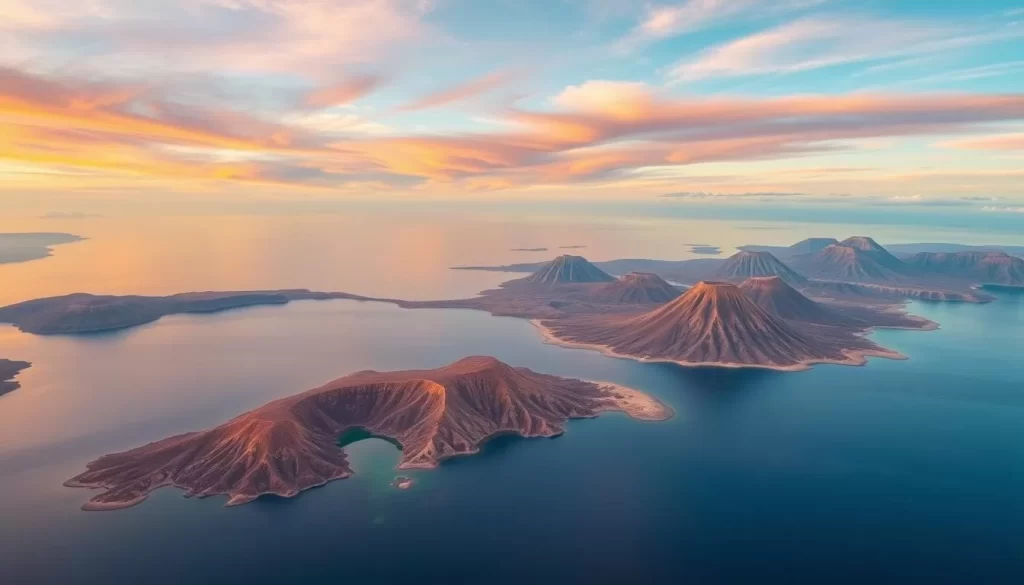
In the vast expanse of Lake Turkana lies Central Island National Park, a gem waiting to be explored. This national park is located in the middle of Lake Turkana, the world’s largest permanent desert lake in northern Kenya.
Location and Geography
Central Island National Park is characterized by its unique volcanic origin. The island rises about 550 feet above the lake and spans approximately 5 square kilometers. The park is known for its three crater lakes: Crocodile Lake with its blue-green waters, Flamingo Lake with rust-red hues, and Tilapia Lake, which boasts emerald green colors. Each lake has its own distinct ecosystem, making the island a fascinating spot for nature enthusiasts.
History and Formation
The island was formed through volcanic activity, and it remains geologically significant due to its active volcanic features. As part of the Lake Turkana National Parks, Central Island National Park was designated a UNESCO World Heritage site. The harsh, arid climate of the region has shaped the unique wildlife and landscape. Despite its remote location, the park offers some of the most unique wildlife viewing opportunities in Kenya for adventurous travelers.
The park is managed by the Kenya Wildlife Service, serving as an important conservation area for several species. For those planning a visit, understanding the park’s travel guide and travel requirements is essential to ensure a smooth and enjoyable experience.
Planning Your Visit to Central Island National Park
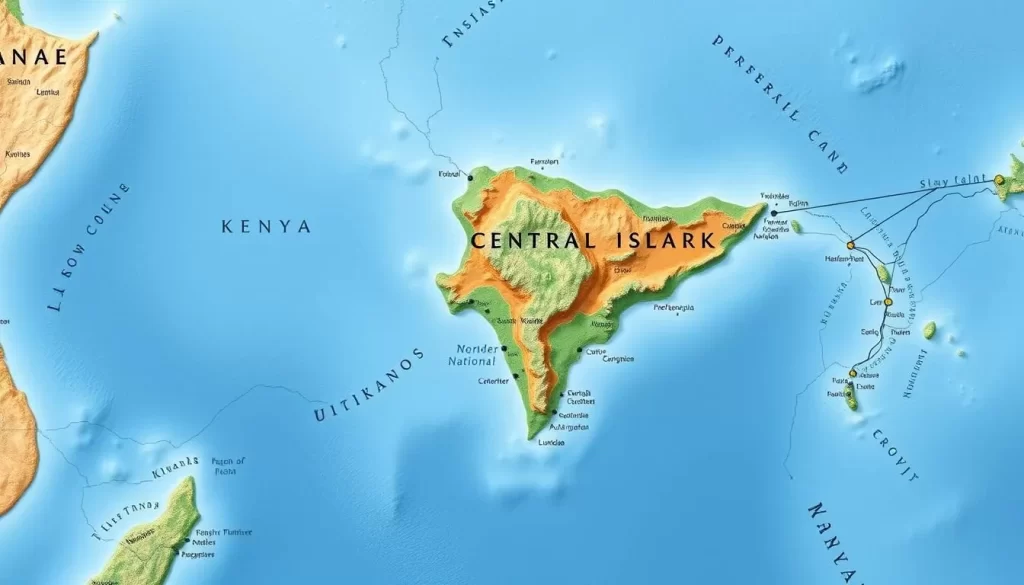
As you prepare for your adventure to Central Island National Park, it’s essential to plan carefully to make the most of your trip.
Best Time to Visit
The best time to visit Central Island National Park is from June to September when temperatures are more moderate, and wildlife viewing is excellent. This period allows for a more comfortable exploration of the park’s unique landscapes and a better chance to spot its diverse wildlife.
How to Get There
Central Island National Park is extremely remote and can only be accessed by boat from the western shore of Lake Turkana or by chartered aircraft to nearby airstrips. The journey from Nairobi or other major Kenyan cities involves several transportation options and can take considerable time, so planning ahead is crucial for a trip to Kenya that includes this destination.
Accommodation Options
Since there are no permanent lodging facilities on the island, visitors must either camp or stay at lodges on the mainland. It’s recommended to bring all necessary supplies, including plenty of water, as facilities are extremely limited. Hiring a knowledgeable local guide can significantly enhance your travel experience by providing insights into the terrain and local wildlife.
Don’t forget to arrange for the necessary permits and entry fees through the Kenya Wildlife Service in advance to ensure a smooth time at the park.
Exploring the Three Crater Lakes
As you explore Central Island, you’ll discover three crater lakes that offer a glimpse into the island’s volcanic past. These lakes are not only a natural wonder but also a haven for diverse wildlife.
Crocodile Lake
Crocodile Lake is the largest of the three crater lakes and is known for its population of Nile crocodiles. These creatures can be seen basking along the shores and swimming in the lake’s blue-green water.
Flamingo Lake
Flamingo Lake is an alkaline crater lake that attracts flamingos and other water birds due to its unique rust-red coloration caused by algae. This lake is a sight to behold, with its vibrant color and active wildlife.
Tilapia Lake
Tilapia Lake is a freshwater crater lake that supports fish populations and serves as a vital water source for the island’s nature. The lake’s ecosystem is distinct from the other two lakes, showcasing the diversity of the area within a small part of the island.
The three crater lakes are connected by walking trails, allowing you to experience all three unique environments in a single day. The lakes are also affected by volcanic activity, with occasional bubbling and steam vents observable. The water levels and chemistry of the lakes change seasonally, impacting the nature and wildlife that depends on them.
The views from the crater rims are spectacular, offering panoramic vistas of Lake Turkana and the surrounding landscape. This makes the experience even more enriching, as you get to appreciate the area from different vantage points.
Wildlife Viewing Opportunities
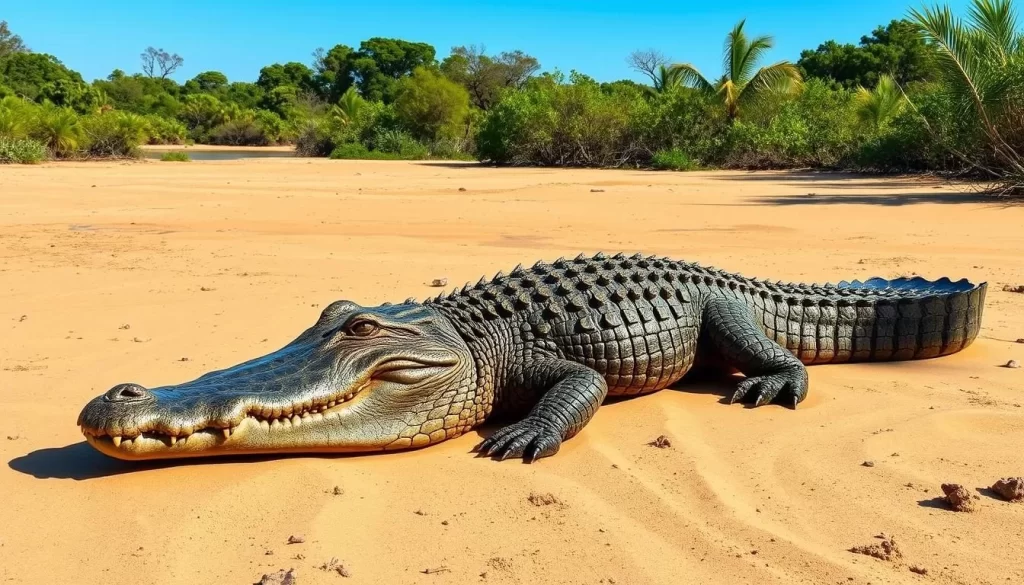
As you step into Central Island National Park, you’ll be immersed in a world of incredible wildlife, shaped by the island’s volcanic origins. The park is renowned for its diverse species, making it a unique destination for a safari experience.
Nile Crocodiles
The park is home to a significant population of Nile crocodiles, particularly in Crocodile Lake. These animals are a highlight of any visit, with their impressive size and powerful presence. The best time to observe them is during the dry season, when they bask in the sun on the lake’s shores.
Hippos and Other Mammals
In and around the island, you can spot hippos in the shallow waters near the shore. The island is also home to a variety of other mammals, including antelope species and small primates. Occasionally, larger mammals swim to the island, adding to the diversity of wildlife.
Best Viewing Spots
The best viewing spots are around each of the three crater lakes and other areas where wildlife tends to congregate. Visitors are advised to follow responsible safari practices to ensure their safety and minimize disturbance to the animals. Nighttime viewing can also be rewarding, as many nocturnal species become active after dark.
Compared to other Kenyan national parks, Central Island offers a unique safari experience due to its volcanic landscape and the variety of species it supports. This makes it an attractive destination for those looking to experience the diversity of Kenyan wildlife.
Bird Watching Paradise
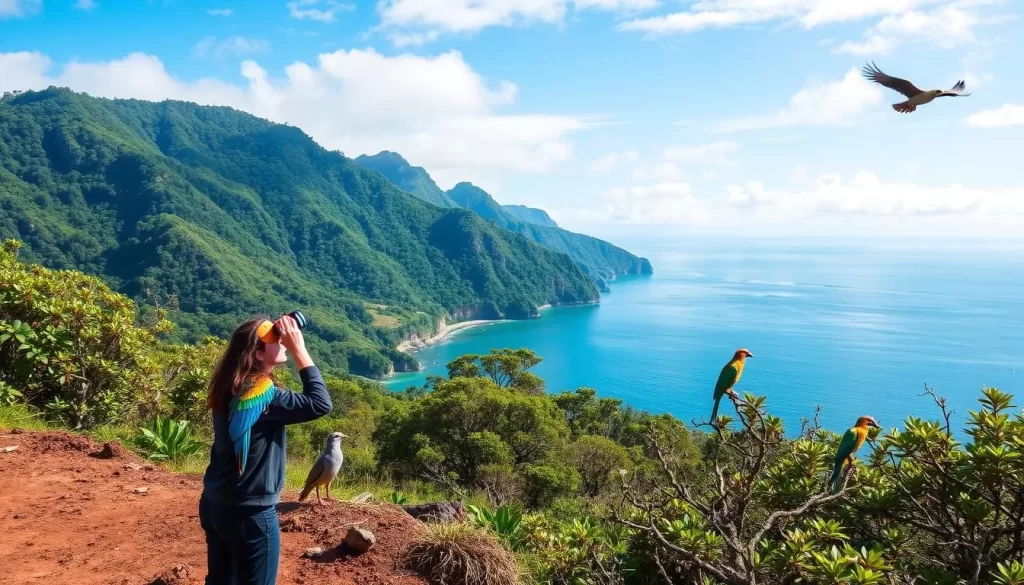
With over 350 bird species recorded, Central Island National Park is a paradise for those who love bird watching. The park’s unique location in Lake Turkana creates a haven for a variety of birds, including the iconic flamingos that seasonally inhabit Flamingo Lake.
Resident Bird Species
The island is home to a diverse range of water birds, including pelicans, herons, storks, and various duck species. These birds can be found around the three crater lakes, each offering a unique bird watching experience.
Migratory Birds
Central Island serves as a crucial stopover point for many migratory birds. The best seasons to observe these transient visitors are during the migration periods, which typically occur in spring and fall.
Essential Gear for Bird Watchers
To make the most of your bird watching experience, it’s essential to have the right gear. This includes binoculars for a closer look, field guides to identify species, and appropriate clothing for the rugged terrain. The best places for bird watching are typically around the crater lakes, where the variety of birds is highest.
Hiking the Volcanic Landscapes
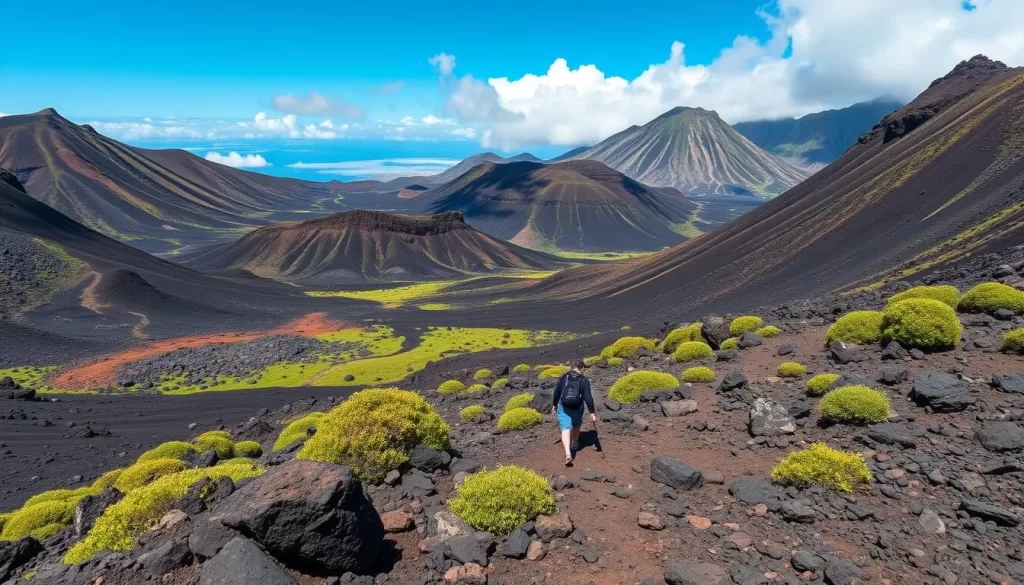
As you step onto Central Island, you’ll discover a world of volcanic landscapes waiting to be hiked. The island offers a unique hiking experience amidst its rugged terrains, making it a must-visit place for adventure seekers.
Trail Options
The main trail connects the three crater lakes, offering a challenging hike that spans approximately 4-5 hours. The trail is of moderate difficulty, with some steep inclines and uneven terrain. You’ll also have the opportunity to hike to the highest point on the island, which provides spectacular 360-degree views of Lake Turkana and the surrounding nature reserve.
Hikers will encounter various geological features, including lava formations, steam vents, and mineral deposits, making this hike a unique experience. It’s essential to stay on designated trails to protect the fragile ecosystem and for personal safety near volcanic features.
Safety Considerations
When hiking in this remote and harsh environment, it’s crucial to carry sufficient water, wear appropriate footwear, and use sun protection. The best time for hiking is early morning or late afternoon to avoid the intense midday heat. Hiring a local guide can enhance your hiking experience by sharing knowledge about the geology, flora, and fauna encountered along the trails, ensuring you make the most of your things to do on the island.
Boat Tours Around the Island
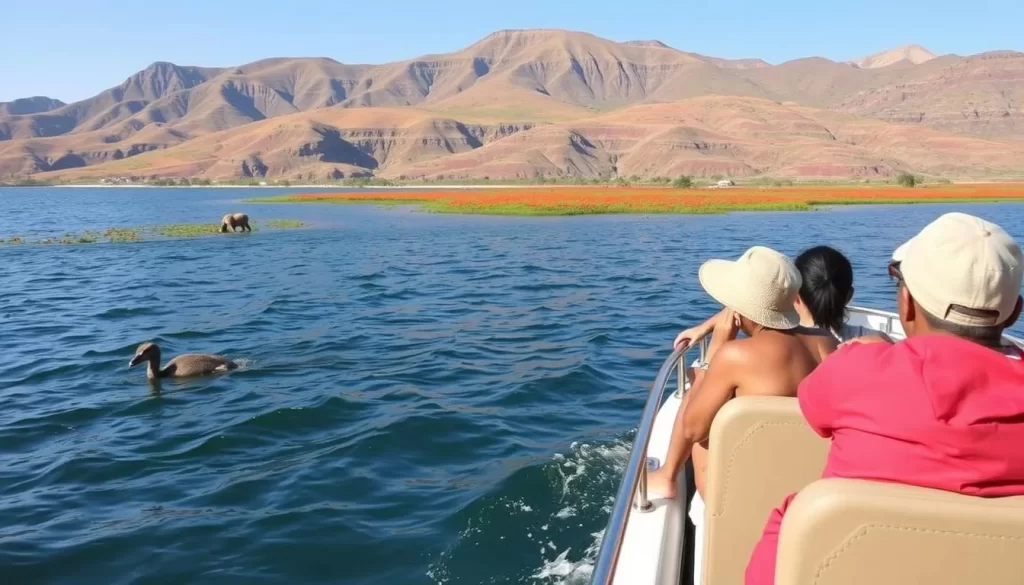
A boat tour around Central Island National Park is an unforgettable experience that showcases the island’s natural beauty. As one best thing to do, it offers a unique perspective on the island’s volcanic landscape and shoreline.
Types of Boat Tours
You can choose from various types of boat tours, ranging from traditional fishing boats to modern motorboats. These tours can be arranged through local operators who are familiar with the lake and its conditions.
What You’ll See
During your boat tour, you’ll have the opportunity to see crocodiles basking on the shores, hippos in the water, and various bird species in flight. The tour allows you to circumnavigate the entire island, providing views of inaccessible areas and volcanic features not visible from hiking trails.
As you cross Lake Turkana to reach the island, you’ll be surrounded by the jade-green water, which gives the lake its nickname “The Jade Sea.” For those interested in fishing, some boat tours offer the chance to catch tilapia or other fish species.
For the best experience, consider taking a boat tour in the early morning when the lake is calmer. Don’t forget to bring sun protection, water, and a camera to capture the memorable moments. Safety considerations include wearing life jackets and checking weather conditions before departure.
Fishing Experiences in Lake Turkana
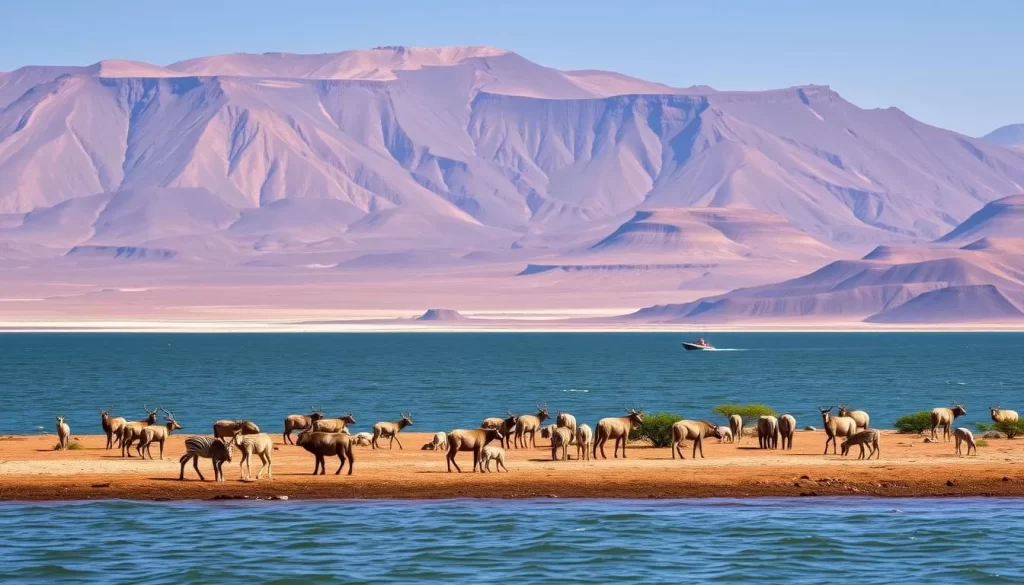
Fishing in Lake Turkana is an adventure like no other, with the chance to catch a variety of fish in a stunning natural setting. The lake is renowned for its diverse fish species, including the Nile perch, tilapia, and catfish.
Popular Fish Species
The waters of Lake Turkana are home to several popular fish species. The Nile perch is known for its size, with some catches reaching up to 200 pounds. Tilapia and catfish are also common, each offering a unique fishing experience.
Fishing Methods
Fishing methods in Lake Turkana vary, ranging from traditional techniques used by local communities to modern sport fishing approaches. You can choose to fish with local guides who know the best spots and techniques.
Sustainable Fishing Practices
It’s essential to practice sustainable fishing to preserve the lake’s ecosystem. This includes catch-and-release for certain species and adhering to regulations regarding fishing in a national park. Make sure to obtain any necessary permits before you start.
The best time for fishing in Lake Turkana varies with the seasons, affecting fish activity and water conditions. Hiring a local fishing guide can enhance your experience, as they provide valuable insights into the lake’s fish populations and the best fishing spots.
Photography Opportunities
With its unique blend of volcanic landscapes, diverse wildlife, and dramatic lake views, Central Island National Park is a photographer’s paradise. The park offers a myriad of things to capture through your lens, making it one of the best things to do in the area.
Landscape Photography
The three crater lakes, with their differently colored waters, offer a surreal backdrop for landscape photography. The volcanic formations and panoramic views from elevated points add to the photographic opportunities. To capture the essence of the park’s landscapes, use a wide-angle lens to encompass the vastness of the scenery.
Wildlife Photography
The park is home to a variety of animals, including Nile crocodiles, hippos, and numerous bird species. When capturing these wildlife moments, it’s essential to maintain a safe distance and minimize disturbance to ensure ethical photography practices.
Best Times and Locations
The golden hour at sunrise and sunset provides the most spectacular lighting conditions for photography. Locations around the crater lakes and elevated viewpoints are among the most photogenic viewpoints. Make sure to have your camera ready during these times to capture the magic of the park.
Cultural Experiences Near Central Island National Park
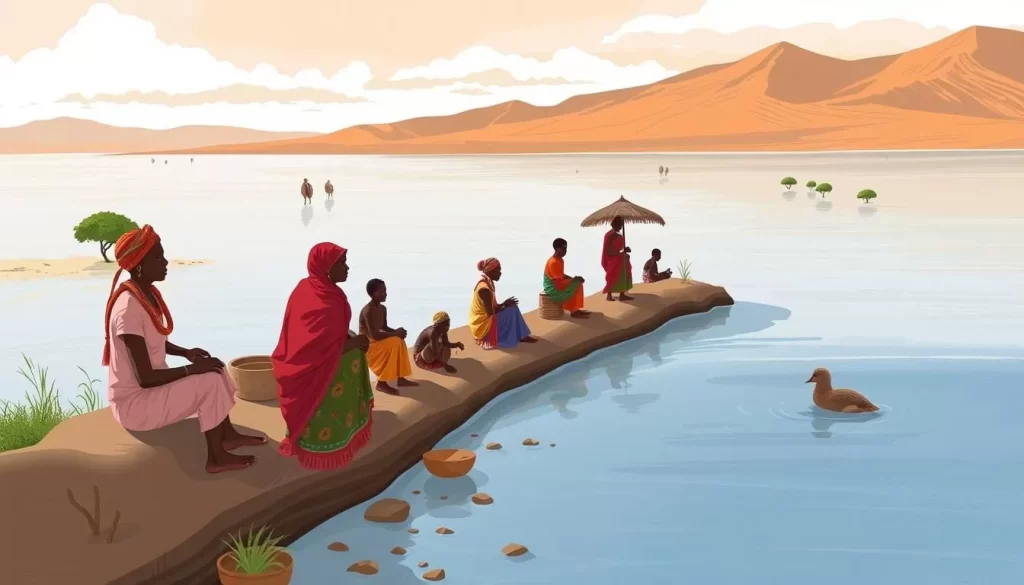
Visiting the communities around Central Island National Park offers a unique opportunity to experience the authentic cultural practices of Kenya’s indigenous people. The Lake Turkana region is home to several indigenous tribes, including the El Molo, Turkana, and Samburu people, who continue to maintain their traditional ways of life.
Local Communities
The El Molo, Turkana, and Samburu communities have developed unique adaptations to thrive in the harsh environment around Lake Turkana. You can visit local villages with a knowledgeable guide who can facilitate respectful interactions and translate conversations with community members.
Traditional Practices
Visitors can observe traditional practices such as fishing techniques, craftsmanship, and ceremonial customs that have been preserved for generations. These experiences are among the most enriching things Kenya offers travelers seeking authentic cultural experiences.
Respectful Cultural Tourism
When engaging with the local communities, it’s essential to practice respectful cultural travel. This includes asking permission before taking photographs and following community guidelines. You can also support the local economy by purchasing traditional crafts at local markets, taking home authentic souvenirs that represent the rich cultural heritage of the region.
To make the most of your cultural experience, consider asking questions that show genuine interest in the culture, avoiding stereotypes or superficial interactions. This approach will enhance your understanding of the local life and contribute to a more meaningful experience.
Camping Under the Stars
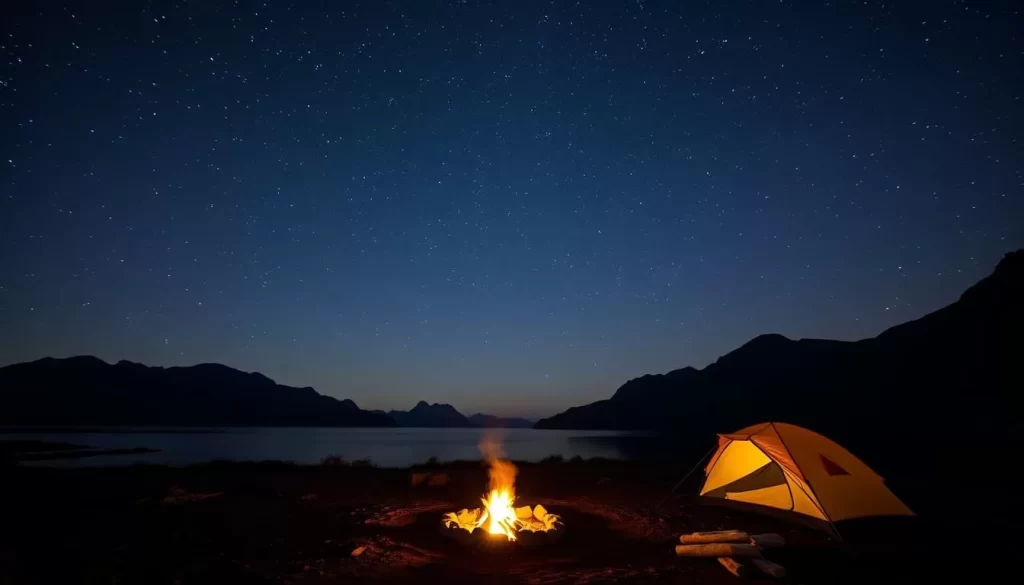
For those seeking an authentic Kenyan experience, camping on Central Island National Park offers an unparalleled adventure. This unique experience allows you to immerse yourself in the natural beauty and tranquility of the island overnight.
Camping Locations
The designated camping areas on the island are located near the crater lakes, offering breathtaking views and an opportunity to be surrounded by the sounds of nature. Camping is the only accommodation option on the island, making it an essential experience for those who want to fully explore the national park.
Essential Gear
When preparing for your camping trip, it’s crucial to bring all necessary gear, as there are no facilities on the island. Essential items include a sturdy tent, sleeping bag, and sufficient food supplies. Remember, you must carry in and out all your supplies to maintain the island’s pristine environment.
Safety Tips
Camping on Central Island requires awareness of the environment. Ensure proper food storage to avoid attracting wildlife, and be mindful of the island’s volcanic activity. The best time for camping is during the dry season when nighttime temperatures are more comfortable.
As you fall asleep, the sounds of hippos grunting in the distance and the waves lapping at the shore of Lake Turkana create a unique lullaby. The absence of light pollution makes for spectacular stargazing opportunities, allowing you to gaze at the clear night sky.
Central Island National Park: Best Things to Do for Adventure Seekers
For those who crave adventure, Central Island National Park presents an array of exciting experiences that extend beyond the traditional safari experiences in Kenya’s national parks.
Challenging Activities
Adventure seekers can indulge in various challenging activities, including scrambling up volcanic slopes and exploring less-traveled areas of the island. The park offershiking trailsthat cater to different levels of difficulty, ensuring that you have a memorable experience. You can also swim in designated areas of Tilapia Lake, one of the few places in the park where it’s safe to swim away from crocodiles.
Unique Experiences
The park offers a range of unique experiences, includingspecialized boat toursthat include fishing, snorkeling in safe areas, and visiting nearby smaller islands. You can observe volcanic activity up close, witnessing steam vents and bubbling mud pots that demonstrate the island’s active geology.
| Activity | Description | Level of Difficulty |
|---|---|---|
| Hiking | Explore the island’s volcanic landscapes and less-traveled areas | Moderate to Challenging |
| Swimming in Tilapia Lake | Swim in designated areas away from crocodiles | Easy |
| Specialized Boat Tours | Fishing, snorkeling, and visiting nearby islands | Moderate |
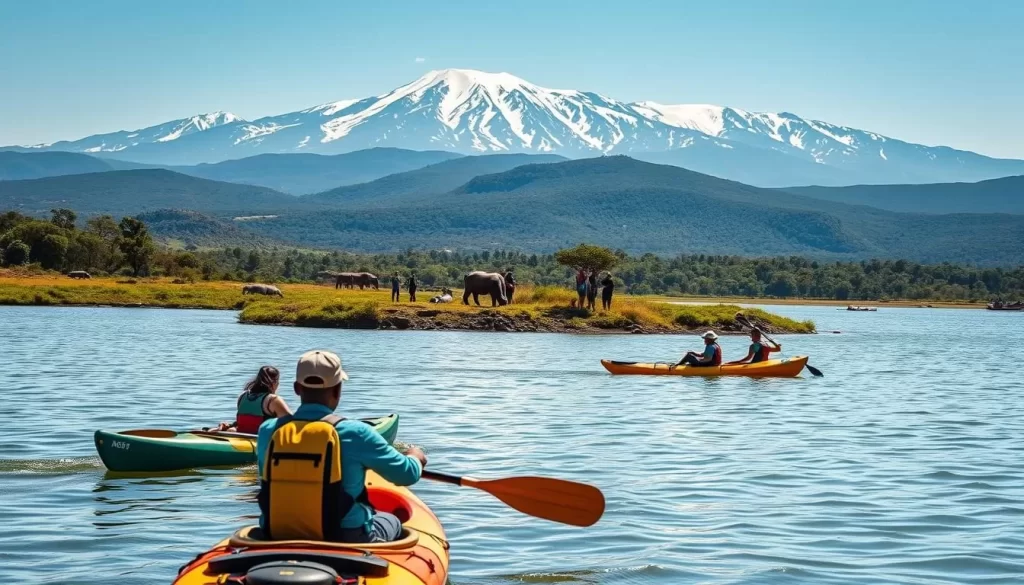
Compared to other national parks in Kenya, Central Island offers a uniquely challenging and rewarding experience. The sense of accomplishment from visiting one of Kenya’s most remote and untouched natural areas is unparalleled. You can combine your visit to Central Island with other adventure destinations in northern Kenya for an epic adventure-focused itinerary, making it one of thebest thingsto do for adventure seekers.
Conclusion: Why Central Island National Park Should Be on Your Kenya Itinerary
If you’re looking for a truly immersive experience in Kenya’s natural beauty, look no further than Central Island National Park. This lesser-known gem offers some of the best things to experience during your trip to Kenya, with a unique blend of volcanic landscapes, wildlife viewing, and cultural experiences that can’t be found elsewhere.
Visiting this remote national park provides a fresh perspective on Kenya’s natural diversity, allowing travelers to escape the crowds at more popular destinations. Key activities to prioritize during your visit include exploring the three crater lakes, wildlife viewing, and camping under the stars. Allocating a few days for your visit will allow you to fully appreciate the park’s offerings.
While reaching the park requires extra effort, the rewards of experiencing this unspoiled wilderness make it well worth the journey. By choosing to visit Central Island National Park, you’re not only creating unforgettable memories but also supporting responsible tourism practices that help preserve this fragile ecosystem for future generations. Make sure to include this incredible destination in your Kenya trip plans for an authentic adventure.
The above is subject to change.
Check back often to TRAVEL.COM for the latest travel tips and deals.
